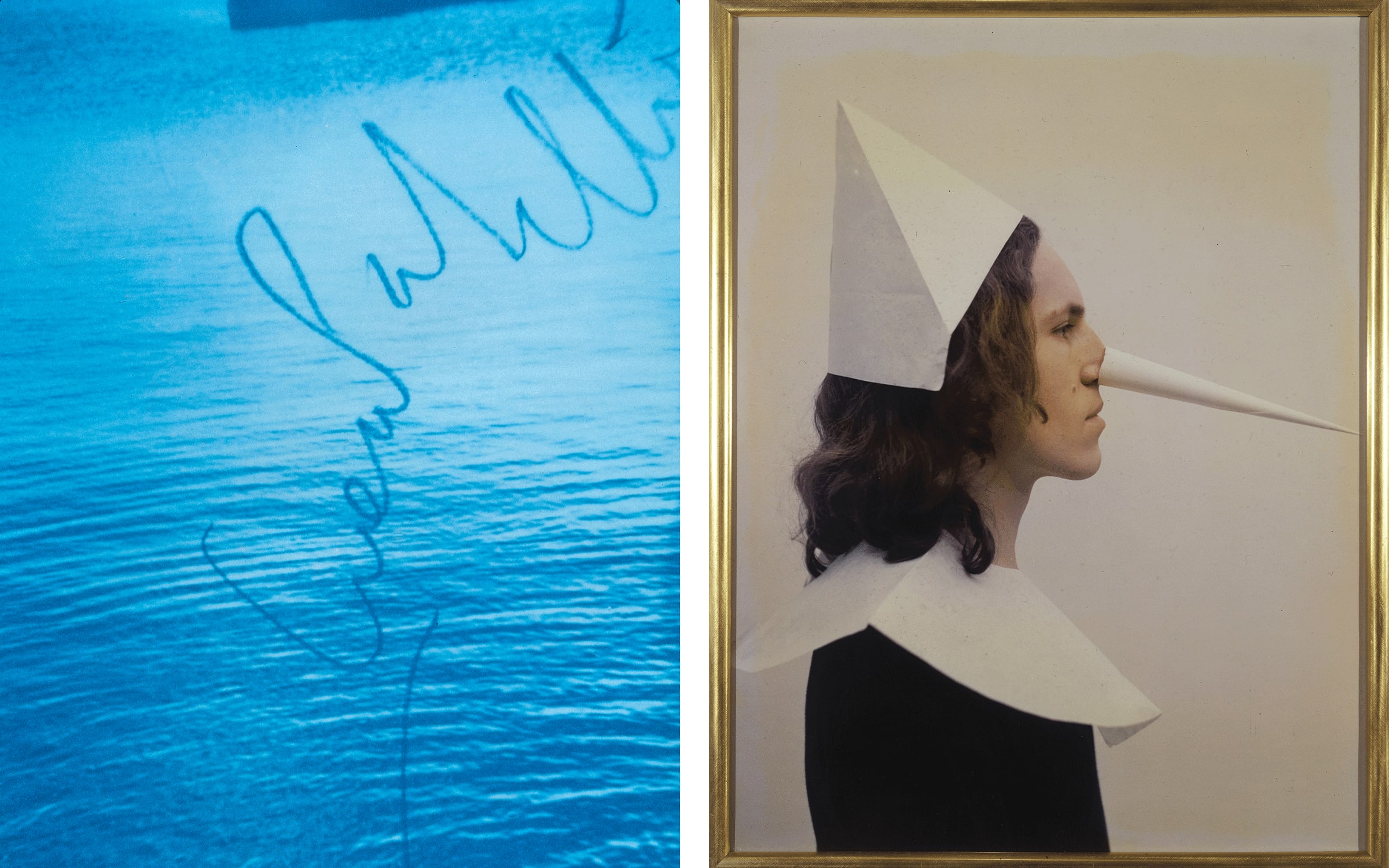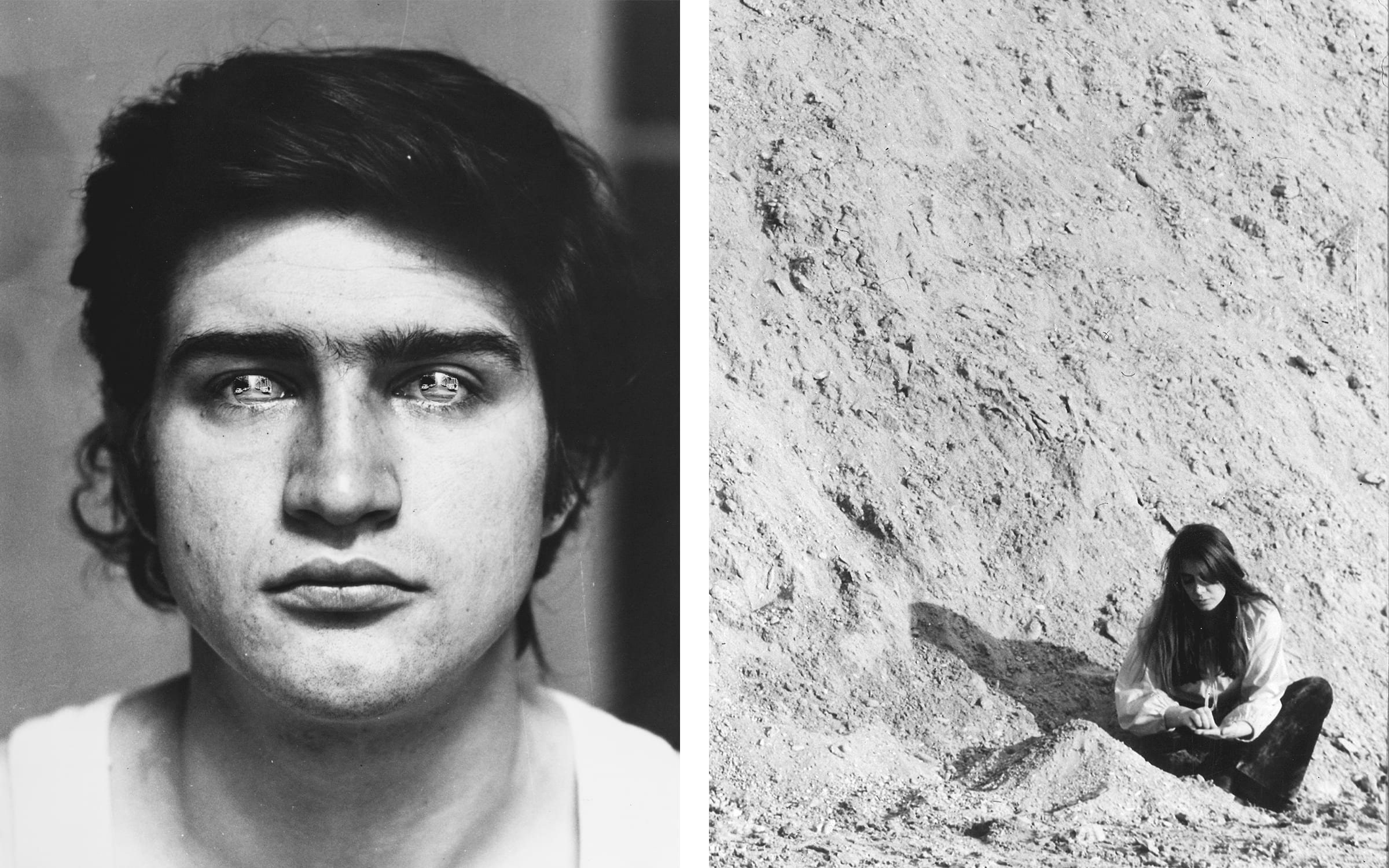In collaboration with Les Inrockuptibles
This winter, Paris’s cultural institutions are forming an alliance. In a follow-up to the two-way dialogues established between the Frac Île-de-France Le Plateau and Bétonsalon (a project conceived by Judith Hopf), and by the Palais de Tokyo and Lafayette Anticipations (Cyprien Gaillard), Le BAL and the Jeu de Paume are teaming up to stage the joint exhibition ‘Renverser ses yeux’, which explores the use of image-based media, photography, film, and video by Italian artists from the 1960s and early 1970s. The exhibition focuses on Arte Povera – a movement defined in 1967 by the art critic Germano Celant, though it was also influenced by fellow travelers, fleeting affinities, and shared trajectories.
‘We did not wish to label the works, nor put artists in boxes, because Arte Povera, was above all about freedom,’ notes Diane Dufour, Director of Le BAL and cocurator of the exhibition along with Quentin Bajac her counterpart at the Jeu de Paume, and Giuliano Sergio, the writer of a PhD dedicated to a subject that has remained underexplored for too long. ‘Art is reduced to its simplest functions: actor and spectator,’ points out Bajac. The body, in other words, is activated instantly and, above all, challenged to free itself from its everyday reflexes. Vision must be cleansed. Perception must be disturbed. And a loss of balance must be provoked.

As part of the exhibition’s four thematic sections – Body (Le BAL), Experience, Image, and Theater (Jeu de Paume) – one particular work is presented at both venues: a wooden plinth that could not be plainer-looking, bearing two footprints. Piero Manzoni’s Magic Base – Living Sculpture dates from 1961 – that is several years before a shared artistic sensibility turned into a fully-fledged movement. Yet all of the elements are already there: we are invited to step onto this plinth, in order to remove academic works from their pedestals more effectively. The original is at Le BAL, and a replica is at the Jeu de Paume.
The point is to bring sculptures to life and set photographs in motion, following the example of the mirror paintings of Michelangelo Pistoletto – another recurrent figure in the show. Dating from the mid-1960s, the paintings – printed on large surfaces in polished stainless steel that take up space and embrace the viewer’s body – are photographic reproductions of images found in the pages of various magazines. In the ‘Minus Objects’ series (1965–1966), there is a drive to strip everything back and retain only a minimal mediation with present-day reality. As Pistoletto notes: ‘My works do not seek to be constructs or fabrications of new ideas…; they are objects through which I free myself from something.’
Open works and bodies invited to complete the work: the representation of the human being – often through the medium of the self-portrait – is carried out in a variety of methods aimed at delaying its capture indefinitely. These will, variously, be the rolls wrapped with photographic prints of a photophore-like skin or the serial meandering through 607 prints of squares of skin by Giuseppe Penone, To Unroll One’s Skin – Neon (1970); Manzoni’s ink on paper fingerprints, Thumbprints (1961); Paolo Icaro’s staring eyes, Faredisfarerifarevedere (1968); or the image of the exhibition from the eponymous work of Penone: his self-portrait wearing mirrored lenses Reversing One’s Eyes (1970).

We thought we knew Arte Povera, exalted by museums and by the market, and summarily viewed as an antidote to industrialization and urbanization. That is a convenient story, infused with binarism and fantastical narratives. Yet it could not be further from the original intention of artists busily readapting the art of the past to the perceptual system of the nmodernhuman being. Today, biometric identification techniques or artificial vision technologies contribute to restoring full relevance to this search for a subjective expression without being solipsistic, a quest that is performed without being cut off from social change. An exhibition that we welcome all the more wholeheartedly because, for all of us, perception has become an issue once again, plagued nowadays by machine reification in the same way as it once was by industrialization.
‘Renverser ses yeux : Autour de l’Arte Povera 1960–1975 – photographie, film, vidéo’
Until January 29, 2023
Le BAL and Jeu de Paume, Paris
Ingrid Luquet-Gad is an art critic and PhD candidate based in Paris. She is the arts editor of Les Inrockuptibles, a contributing editor at Spike art magazine, and a writer for Flash Art.
English translation: Nazanine Nayeri.
This article is part of a yearlong collaboration between Paris+ par Art Basel and Les Inrockuptibles. Click here for the original article.
Captions for full-bleed images: 1. Mimmo Jodice, Il viaggio di Ulisse, 1969. Courtesy of Galerie Karsten Greve (St. Moritz, Cologne, Paris) © Mimmo Jodice. 2. Claudio Abate, Pino Pascali, Ragno, 1968. Property of Fondazione per l'Arte Moderna e Contemporanea CRT - loan to the GAM - Galleria Civica d'Arte Moderna e Contemporanea di Torino. Reproduction permitted by Fondazione Torino Musei. © Photo Studio Fotografico Gonella 2009, Claudio Abate Archive. 3. Giulio Paolini, Antologia (26/1/1974), 1974. Milan, personal collection. Photograph by Marco Ciuffreda. Courtesy of Fondazione Giulio and Anna Paolini, Turin © Giulio Paolini.